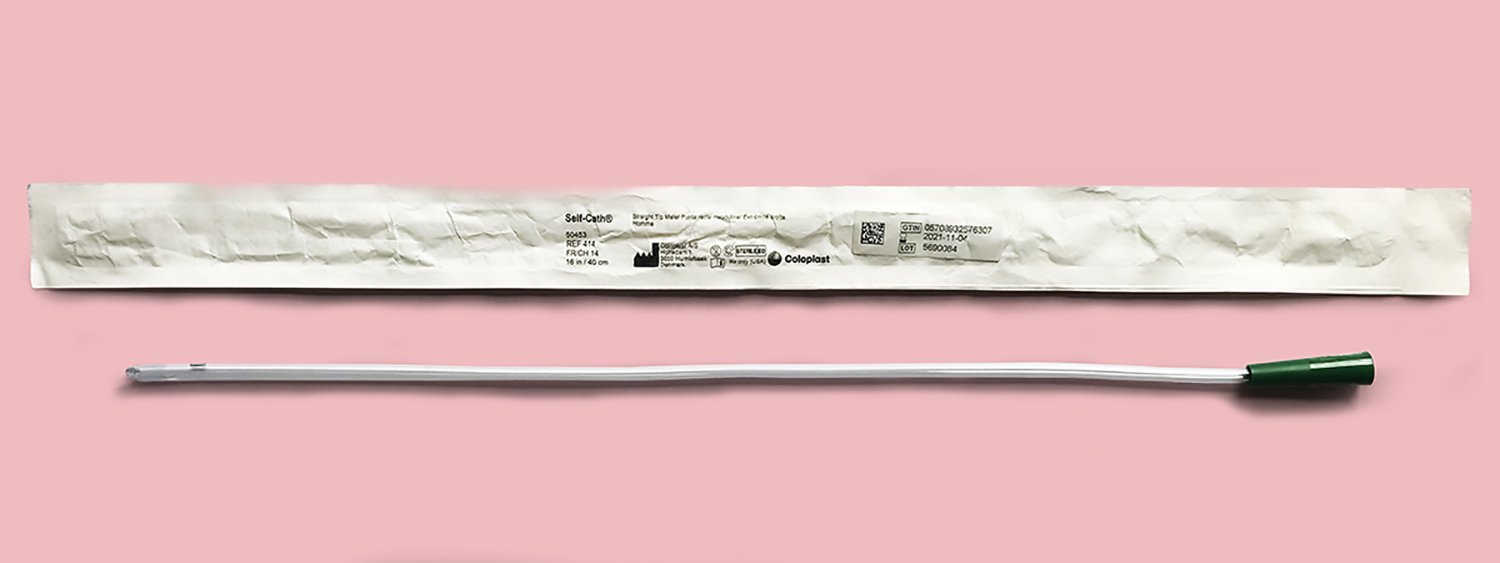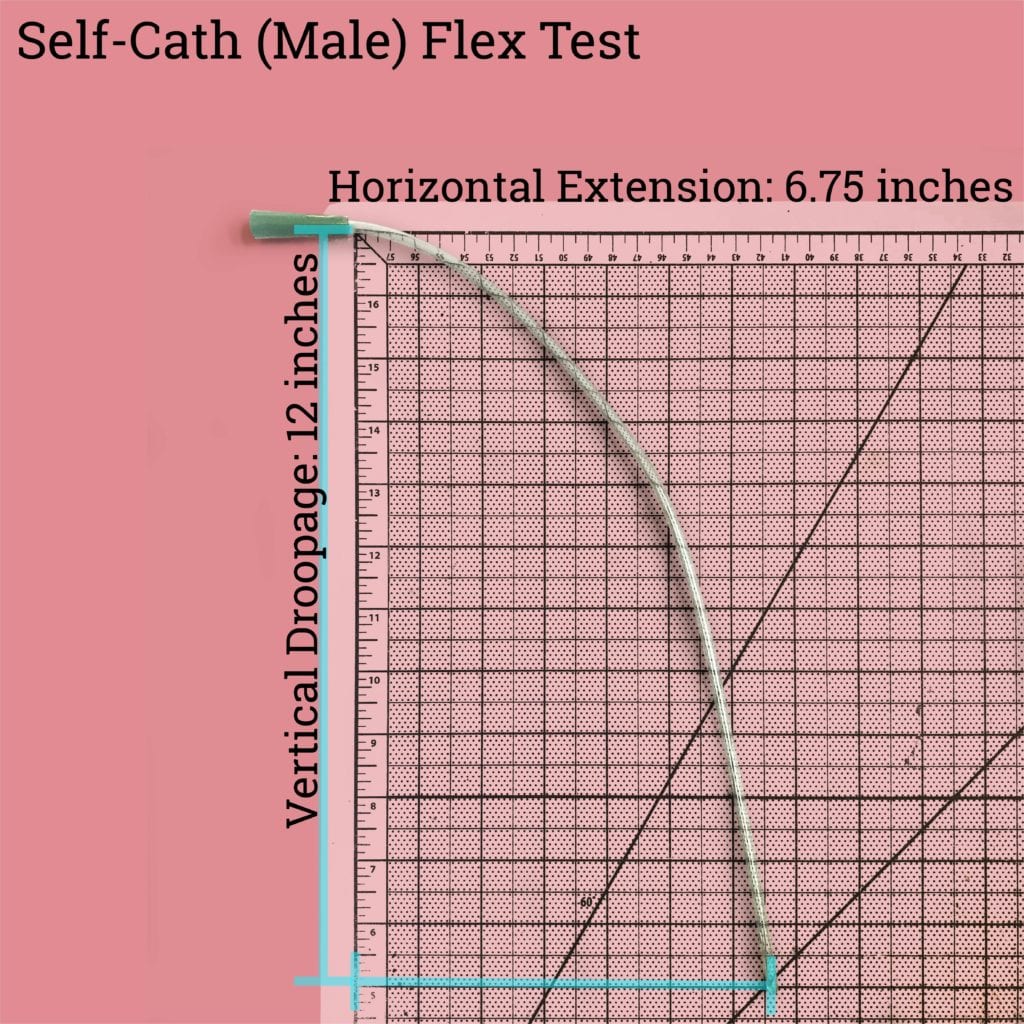Coloplast Self-Cath®

Product Overview
Available Lengths: 16 inches (Male); 6 inches (Female)
Available Sizes: Fr 5 (pediatric), 6 (pediatric), 8, 10, 12, 14, 16, 18
Available Tips: Coudé (Olive Tip & Taper Tip) and Standard
Pros
Extreme flexibility means you don’t have to worry quite as much about false passages during insertion.
Our Verdict
This product uses DEHP, so it’s probably best to stay away. There are other, cheap catheters that aren’t made with materials known to cause reproductive harm.
Cons
Extreme flexibility means it might be hard to avoid contact contamination when using this catheter.
DEHP is not a good material to be putting into your body. Avoid it here as well.
Material
The Self-Cath® is an uncoated catheter that is made out of PVC with DEHP plasticizers (per McKesson’s product listing and the GentleCath Uncoated‘s 510(k) statement, which lists the Self-Cath as a predicate).
DEHP is known to interfere with testosterone production and is labeled as a carcinogen in California. The FDA issued a 2002 Public Health Notification advising healthcare professionals to switch to devices made out of alternative materials.
Flexibility

The Self-Cath® catheter is extremely flexible – the male catheter droops down an astonishing 12 inches, while extending out 6.75 inches horizontally. The female catheter droops down 0.75 inches, while extending 5 inches horizontally. There is an additional version of the female catheter without the funnel – this catheter only droops down 0.25 inches, while extending out 6 inches.
Catheter flexibility is a double-edged sword – the stiffer the catheter, the easier it is to insert, but it’s could be easier to accidentally injure yourself. On the other hand, the more flexible the catheter, the harder it is to hurt yourself while inserting it, but it’s also harder to lubricate the catheter or get it all the way to your bladder without touching every inch of it.
Packaging
The packaging for the Self-Cath® uncoated catheter is very basic. There are no usability tabs for people with limited dexterity, nor is there a sticker to temporarily place the packaging on the bathroom wall while you catheterize. The packaging is glued together in a way that gives users approximately three quarters of an inch to grab the packaging and pull it apart, which is better than most other standard uncoated catheters that we’ve seen.
Lubrication
For uncoated catheters like this one, people usually take a single-use lubricant sachet, rip it open on both ends, and pass the sachet over the catheter. Since the Self-Cath® is so incredibly flexible, it’s extremely difficult to get the catheter into the lubricant sachet, and it can be uncomfortable to handle the catheter when it’s already been lubricated.
It is possible to use the lubricant sachet as an improvised insertion sleeve, helping you to avoid touching the catheter directly and getting lubricant all over your hands. See our video for more details!
Insertion
The flexibility of the catheters is a major drawback here. If you’re a woman using this product, you’ll need to take care that the catheter doesn’t accidentally enter the vaginal canal when catheterizing, otherwise you’ll need to use a new catheter so you don’t get an infection.
If you’re a man using this product, it’s pretty much impossible to use it without directly touching every inch of the catheter as it goes into your body. We’ve known guys who remove the packaging from the catheter, and then use it to handle the catheter without touching it directly. That might be worth a shot to reduce infection potential if you think the packaging is cleaner than your hands are. Another alternative, as we mentioned above, is using the lubrication sachet as an improvised insertion sleeve!
Adverse Events
There were no product complaints for the Self-Cath catheters for all of 2019.

The review of FDA Medical Device Reports from 2019 provides a limited snapshot of recent product performance in the marketplace.
- LoFric Classic
- LoFric Dila-Cath
- LoFric Elle
- LoFric Hydro-Kit
- LoFric Origo
- LoFric Primo
- LoFric Sense